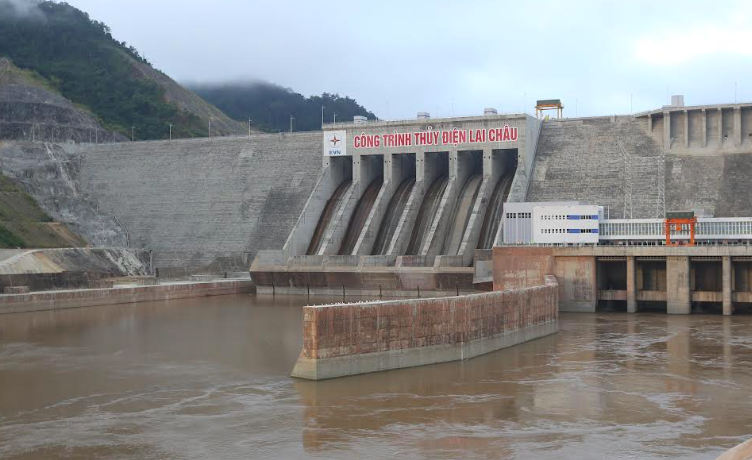Updating information on the situation of electricity supply and operation of the national power system, on July 15, the Electricity Regulatory Authority ( Ministry of Industry and Trade ) said that hydropower had 2 consecutive weeks of strong growth in electricity generation output.

With a lot of water flowing into the lake, hydroelectric reservoirs in the North are increasing their power generation capacity to avoid excess discharge, causing electricity output from hydroelectric power plants to increase sharply.
According to the Electricity Regulatory Authority, from July 7 to 13, the temperature in the North increased to 37 - 38 degrees Celsius. Due to the impact of prolonged heat, the load (electricity demand) in the North recorded the highest capacity and output ever at 465.9 million kWh and the maximum capacity reached 23,094 MW (July 7).
Regarding national load, the average daily output reached 920.7 million kWh, about 39.9 million kWh higher than last week; the maximum capacity during the week reached 45,474 MW, the highest since the beginning of the year, 1,723 MW higher than last week.
According to the Electricity Regulatory Authority, through monitoring data developments in recent weeks, it can be seen that the year's records in terms of output and maximum capacity are continuously being broken and new records are being set.
Despite the record high load, due to careful preparation, timely resolution of incidents and capacity reductions at thermal power plants, and improved hydrological conditions in northern lakes, electricity supply was still well ensured last week.
Hydropower output increased by 24%
Also according to the Electricity Regulatory Authority, the total electricity output of the entire national power system, including imported electricity from July 7 to 13, reached 6.129 billion kWh, an increase of 3.59% compared to the previous week, with an average daily output of 875.6 million kWh.
Of which, hydropower output reached 1,682.6 million kWh, accounting for 27.5% of total output and increasing by 24% compared to the previous week. Accordingly, hydropower output increased sharply for two consecutive weeks, with last week increasing by 55.9% compared to the previous week.
Hydropower generation increased strongly because reservoirs in the North entered the main flood season, so the water flow to the reservoirs increased sharply compared to last week. Hydropower plants increased their operating capacity to maintain pre-flood water levels according to the inter-reservoir operation process, avoiding excess discharge.
In addition, the cascade reservoirs have coordinated their operations to make the most of the water column for power generation. Hydroelectric reservoirs in the Central and Southern regions all have water flows higher than the average of many years and have increased sharply compared to last week.
Commenting on the situation of power supply and operation of the national power system in the week from July 15 to 21, the Electricity Regulatory Authority said that according to the National Center for Hydro-Meteorological Forecasting, the Northern and North Central provinces will have showers and thunderstorms, with some areas having heavy to very heavy rain. The temperature in the Northern and North Central regions is forecast to be lower than in the week from July 7 to 13, so the demand for the national power system load is forecast to be lower than last week.
Next week, hydropower plants will be operated according to the actual hydrological situation and optimal orientation in the July operation plan, meeting system demand, water level and downstream water supply requirements according to the inter-reservoir process.
For coal-fired thermal power plants, it is expected to mobilize according to system demand and committed electricity output (if any), while ensuring grid transmission limit constraints and voltage quality.
Source link






























































































![[Infographic] In 2025, 47 products will achieve national OCOP](https://vphoto.vietnam.vn/thumb/402x226/vietnam/resource/IMAGE/2025/7/16/5d672398b0744db3ab920e05db8e5b7d)





Comment (0)